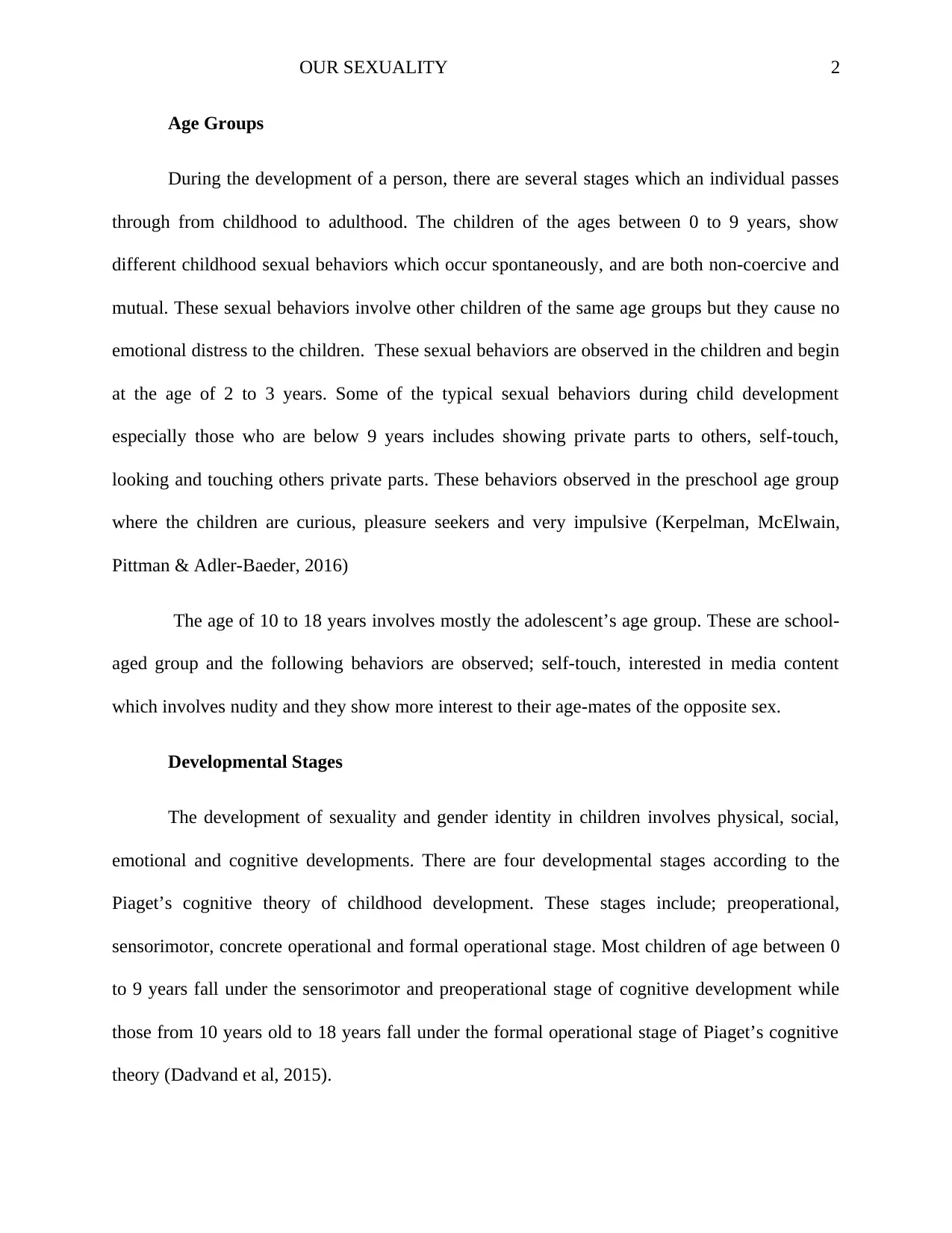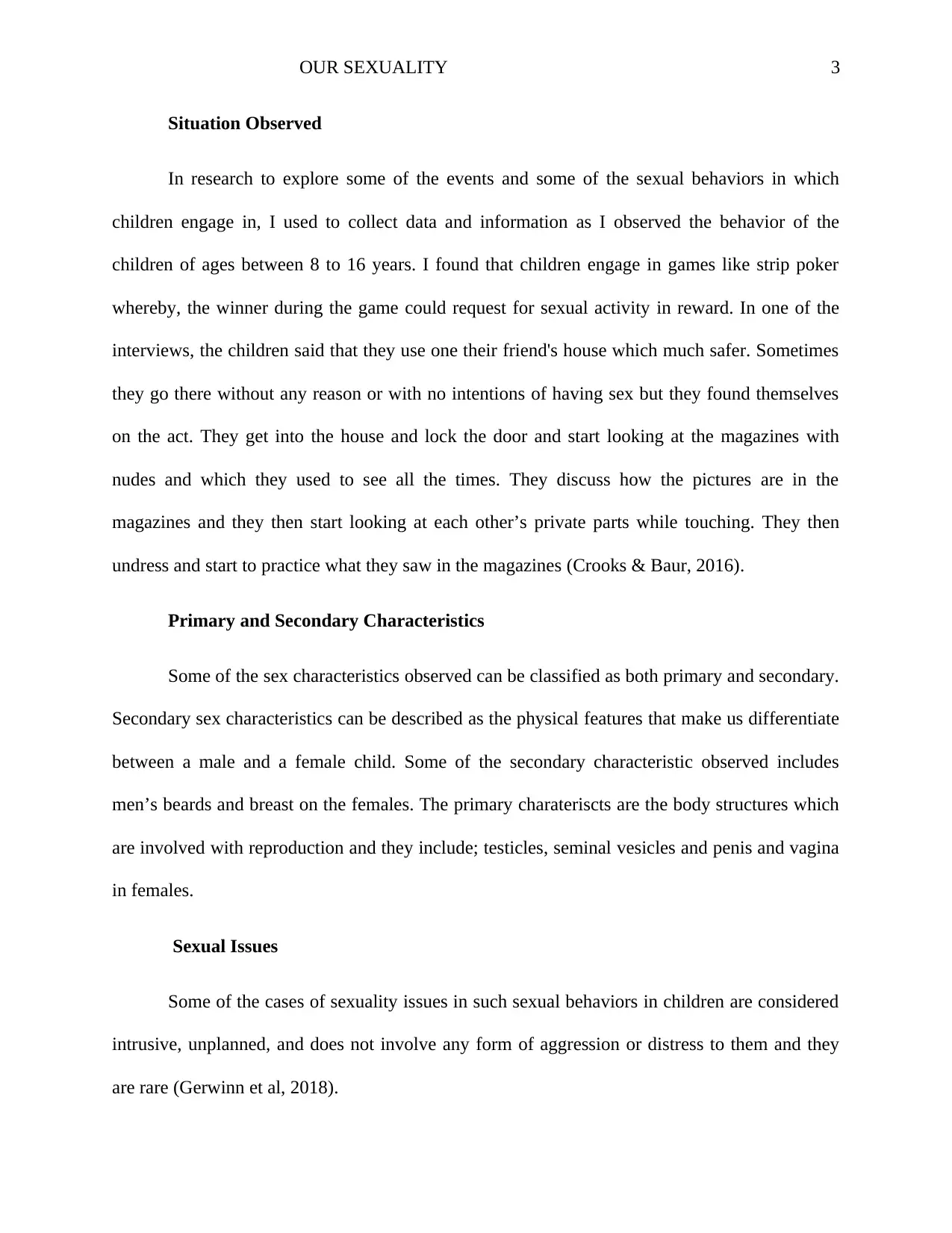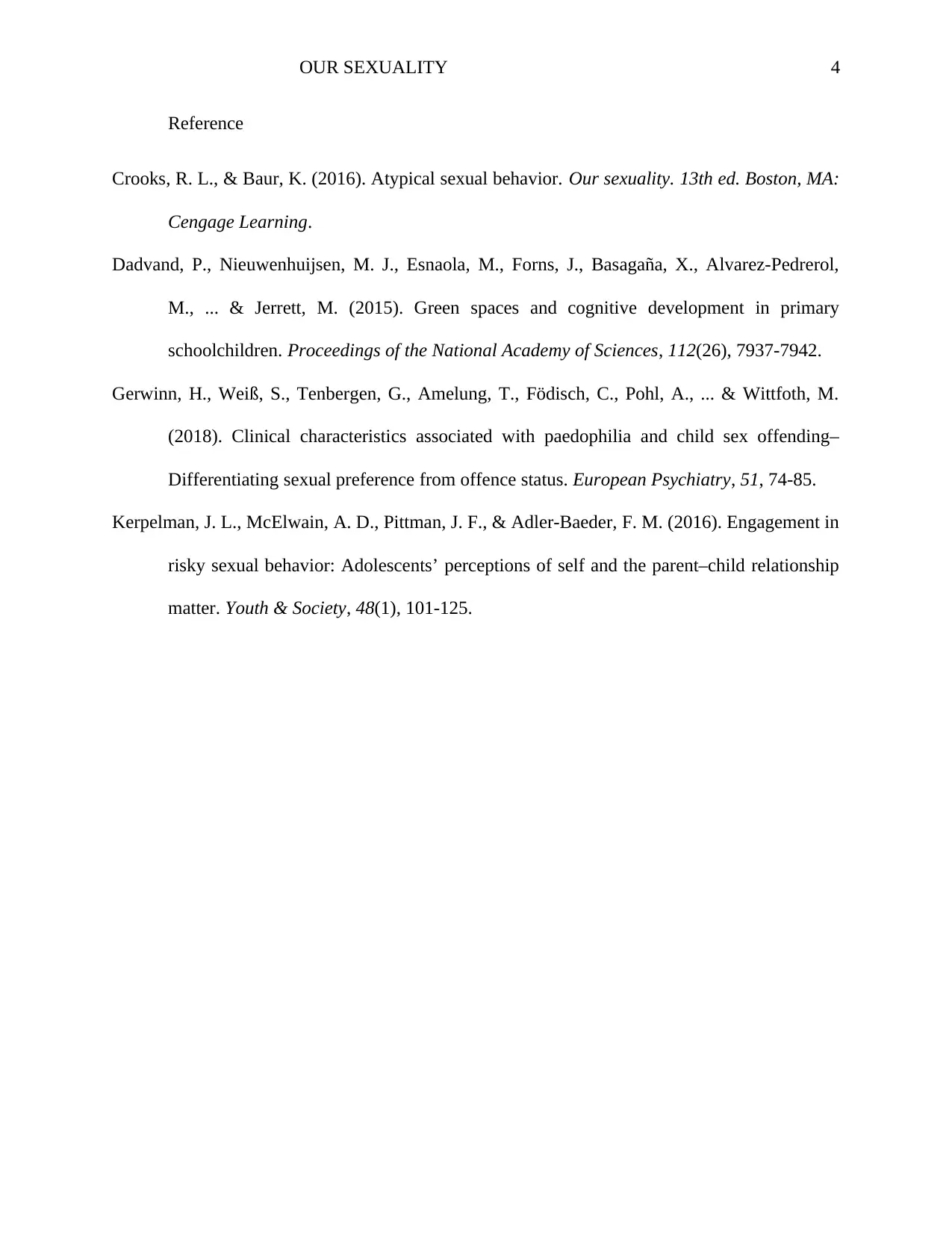Psychology Assignment: Sexuality and Childhood Development Reflection
VerifiedAdded on 2023/01/20
|4
|835
|71
Report
AI Summary
This report presents a reflection on childhood sexuality and development, comparing the behaviors and characteristics of two age groups: 0-9 years and 10-18 years. It discusses the developmental stages according to Piaget's theory, focusing on the sensorimotor, preoperational, and formal operational stages. The report describes an observed situation involving children and their engagement in sexual behaviors, including touching and exploring private parts, and examines the presence of primary and secondary sex characteristics. It also addresses potential sexuality issues, noting that such behaviors, while intrusive, are often unplanned and do not involve aggression or distress. The report provides a detailed analysis of the observed behaviors, developmental stages, and related issues in the context of the provided references.
1 out of 4











![[object Object]](/_next/static/media/star-bottom.7253800d.svg)